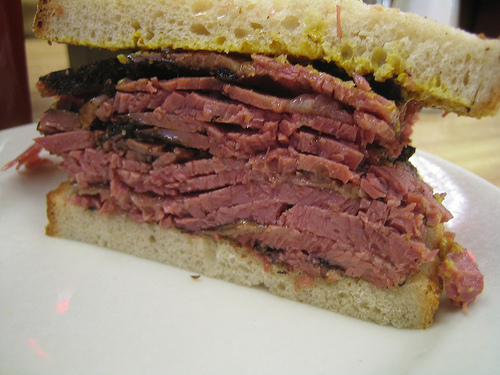Realtime Kills Everything
- Edit
- Delete
- Tags
- Autopost
Our first ad campaigns are live and the results are exciting. The campaign ran on a premium publisher in the women’s lifestyle vertical and beat the publisher’s control group on Click- Through-Rate (CTR) by 77% on the 728 x 90 unit and 194% on the 300 x 250. There were over 1M impressions in the campaign served on this domain over a 2-week period. Yieldbot is now serving the entire campaign.
Most exciting to us are some of the individual results:
- The best performing keyword has a CTR of 1.56%.
- The best creative unit (a 300 x 250) is getting 1.01%
We are running IAB standard banner units. This is not text. This is not rich media.
According to MediaMind the industry average CTR for the campaign vertical is 0.07%
The most matched keyword intent has a CTR of .43%. It also has a CPC of $5.
That math works out to an eCPM of $21.44. That’s pretty exciting stuff. Even more so when you factor in that this campaign is running in what was unsold inventory.
When I shared the results with one of our Board Members he asked me, what at the time I thought was a simple question. “Why are the results so good?” But then, I actually had to think hard about the answer. I had to boil down a year of beta testing and then another year of building a scalable platform into what deserved to be a simple answer.
Realtime.
Realtime was my one word answer. Never before was every page view of intent for this publisher's visitors captured in realtime - let alone used to make a call to an ad server at that very moment.
Realtime is different. Realtime kills everything before it. As such, Yieldbot is not building ad technology for the web. We are building web technology for ads. Since nothing is more important for advertising success than timing it makes sense that nothing is more valuable for results than realtime.
Realtime was a big buzzword for a while but the hype has died down. That’s good. In the Hype Cycle we’re now somewhere moving from the “Trough of Disillusionment” to the “Slope of Enlightenment.” It is however this ability of the web to react in realtime that makes the future of the medium so exciting.
Twitter of course is the best representative example. Twitter changed everything about media that came before it. Used to be that breaking the story was the big deal Now, even online news seemed stodgy compared to people giving realtime updates that planes have landed on rivers, people being killed and opining on a live show right along with it.
As technology continues to get better at processing the trillions of inputs from millions of people going about their daily lives - doing everything from riding their car to work, buying a pack of chips, surfing the web – the web will respond in realtime. Because of that it will be relevant. The idea of an ad campaign will seem like owning a 32 volumes set of Encyclopedia Britannica. Everything becomes response because the technology is responsive. Calculations need inputs. The web will be measuring just about everything you do and know the moment you are doing it. Nothing will be sold. Everything will be bought.
It’s that realtime pull that creates these new valuations of the media. That new value of the media is what we have been working to create at Yieldbot. That is why these results are so exciting. Best of all, we’re just getting started. We’ve got a bunch of new campaigns about to get underway and we’re only going to get smarter and more relevant. We’ll continue to keep you posted on how it’s going and if you're running Yieldbot you'll know yourself. In realtime.




